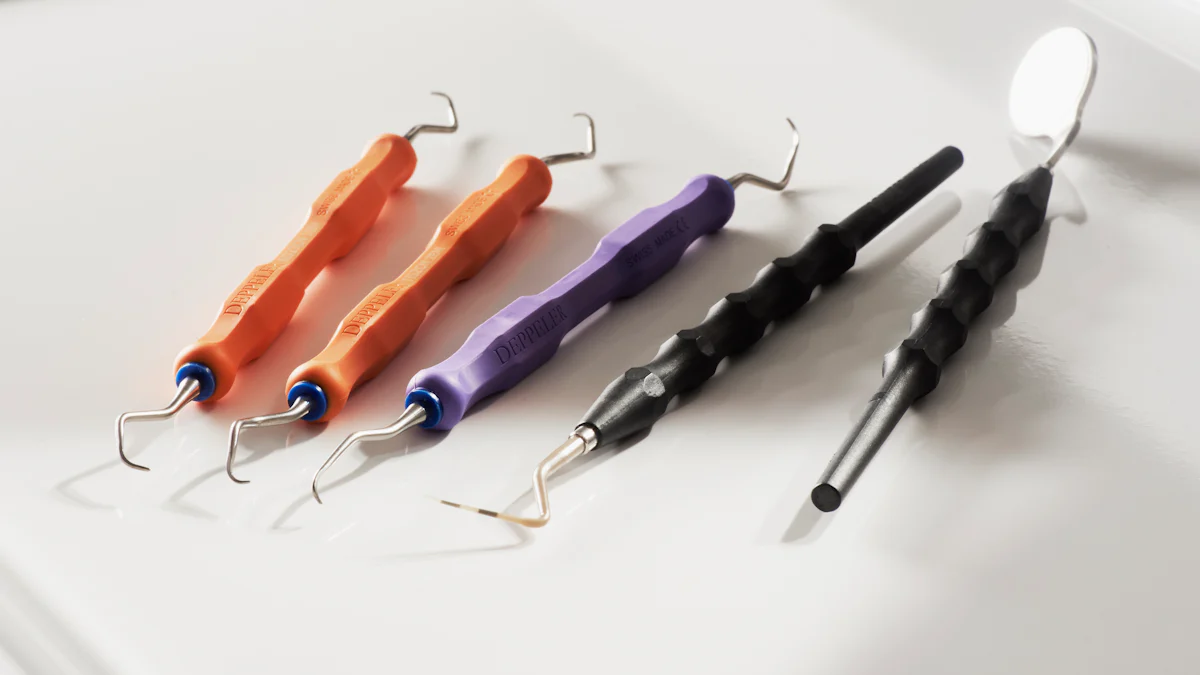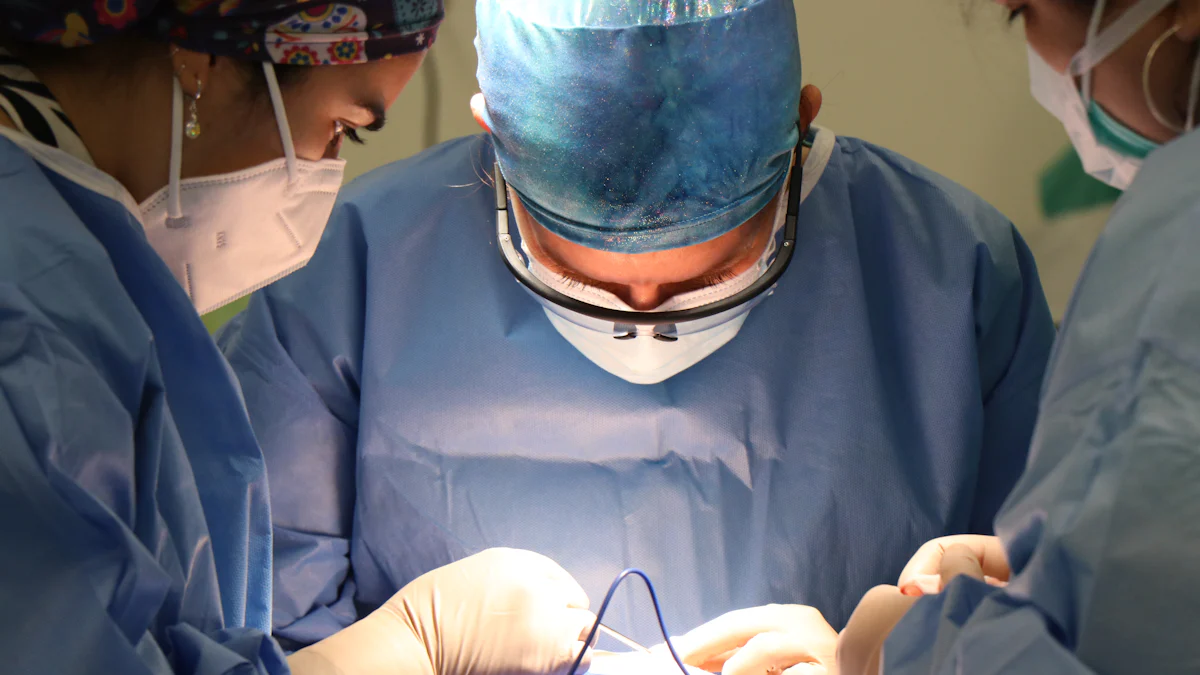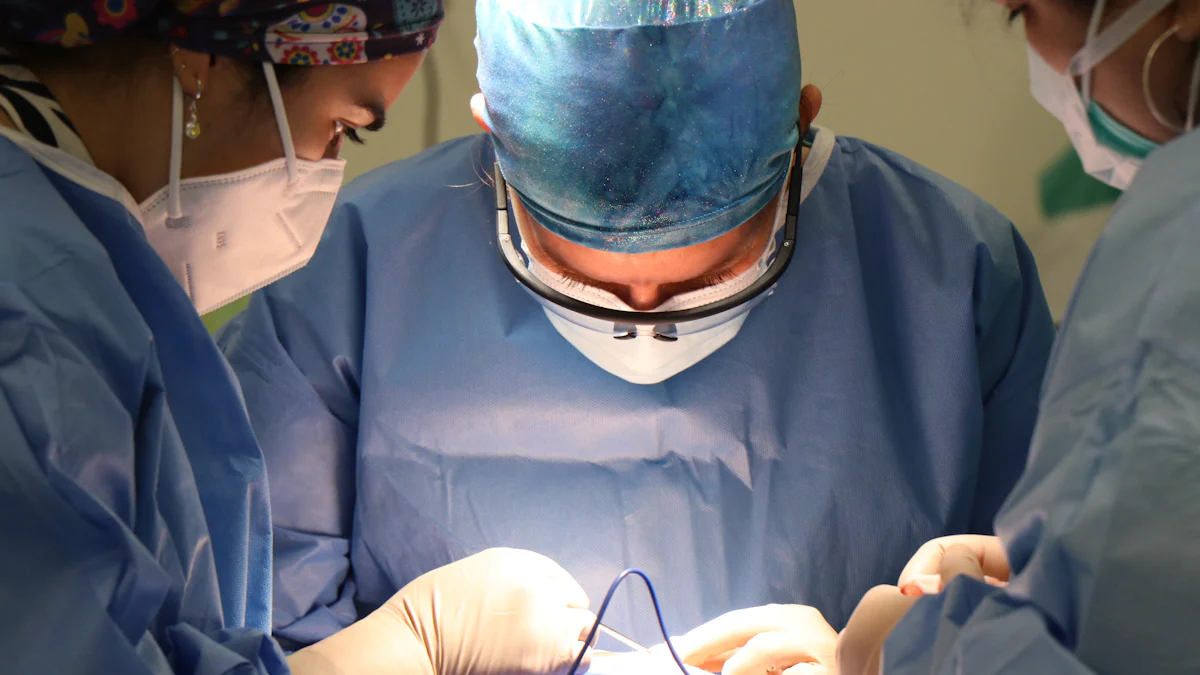How Ultrasonic Scalpels Make Surgery Safer

When considering surgical tools, the ultrasonic scalpel stands out for its innovative approach. Safety is paramount in any surgical procedure, and the introduction of ultrasonic scalpels has revolutionized this aspect. The benefits they offer are unparalleled, from precise incisions to reduced risks during operations.
Understanding Ultrasonic Scalpels
The Ultrasonic Scalpel operates on the principle of ultrasonic vibrations, a technology that has transformed surgical procedures. These vibrations are instrumental in achieving precise incisions and minimizing tissue damage during operations.
The Science Behind Ultrasonic Vibrations
How Ultrasonic Vibrations Work
To understand how Ultrasonic Scalpels function, it is crucial to grasp the concept of ultrasonic vibrations. These high-frequency waves produced by the scalpel create a cutting effect that is both efficient and gentle on tissues.
Application in Surgical Procedures
The application of ultrasonic vibrations in surgical procedures has significantly enhanced the safety and efficacy of operations. Surgeons can now perform intricate maneuvers with enhanced control and reduced risks to patients.
Components of an Ultrasonic Scalpel
Ultrasonic Generator
At the core of an Ultrasonic Scalpel lies the ultrasonic generator, responsible for converting electrical energy into mechanical vibrations. This component ensures a consistent and precise cutting mechanism essential for successful surgeries.
Handpiece and Blade
The handpiece and blade of an Ultrasonic Scalpel work in harmony to deliver controlled vibrations to the target tissues. This synergy between components enables surgeons to navigate delicate anatomical structures with unparalleled accuracy.
Mechanism of Action
Cutting and Coagulation
The primary function of an Ultrasonic Scalpel is twofold: cutting through tissues with precision while simultaneously promoting coagulation to minimize bleeding. This dual action streamlines surgical procedures and contributes to better patient outcomes.
Minimizing Thermal Damage
Unlike traditional tools that rely on heat for cutting, Ultrasonic Scalpels operate at lower temperatures, reducing thermal damage to surrounding tissues. This innovative approach enhances safety by mitigating the risk of inadvertent tissue trauma.
Benefits of Using Ultrasonic Scalpels

Increased Safety
Precision in Cutting
Ultrasonic scalpels ensure precise incisions during surgical procedures, enhancing the accuracy of tissue dissection.
Surgeons can achieve meticulous cuts with ultrasonic scalpels, reducing the margin of error in delicate operations.
The precision offered by ultrasonic scalpels contributes to overall surgical safety by minimizing unnecessary tissue trauma.
Reduced Risk of Infection
By utilizing ultrasonic scalpels, surgeons can significantly decrease the risk of postoperative infections.
The technology's ability to create clean, precise cuts reduces the chances of contamination during surgical interventions.
Patients undergoing procedures with ultrasonic scalpels experience lower infection rates, leading to improved recovery outcomes.
Enhanced Precision
Targeted Tissue Dissection
With ultrasonic scalpels, surgeons can precisely target specific tissues without causing damage to surrounding structures.
The focused nature of tissue dissection using ultrasonic scalpels allows for intricate surgical maneuvers with minimal collateral impact.
The enhanced precision provided by ultrasonic scalpels enables surgeons to navigate complex anatomical regions with unparalleled accuracy.
Minimal Damage to Surrounding Tissues
One of the key advantages of ultrasonic scalpels is their ability to minimize trauma to adjacent tissues during surgeries.
By reducing thermal spread and mechanical trauma, ultrasonic scalpels help preserve healthy tissues surrounding the operative site.
Patients benefit from reduced postoperative complications due to the minimal damage inflicted on neighboring structures.
Reduced Recovery Time
Faster Healing
Patients undergoing procedures with ultrasonic scalpels often experience accelerated healing processes post-surgery.
The precise and controlled cuts made by ultrasonic scalpels promote faster tissue regeneration and overall wound closure.
Faster healing times associated with ultrasonic scalpel usage lead to shorter hospital stays and quicker return to daily activities.
Less Postoperative Pain
Utilizing ultrasonic scalpels results in decreased postoperative pain levels for patients undergoing surgical interventions.
The minimized thermal damage and precise incisions made by ultrasonic scalpel contribute to reduced discomfort during the recovery period.
Patients report lower pain intensity following procedures involving ultrasonic scalpel, enhancing their overall satisfaction and well-being.
Applications in Various Surgeries

Spinal Surgeries
In spinal surgeries, ultrasonic scalpels have shown remarkable efficacy. Surgeons utilize the precision of ultrasonic scalpels to navigate intricate spinal structures with enhanced accuracy. The technology's ability to minimize tissue damage contributes to improved patient outcomes, ensuring a successful surgical intervention.
Case Studies and Examples
Successful spinal surgeries using ultrasonic scalpels have been documented in various medical journals.
The application of ultrasonic scalpels in complex spinal procedures has led to reduced complications and faster recovery times.
Surgeons worldwide rely on the advanced capabilities of ultrasonic scalpels for challenging spinal cases, showcasing their versatility and reliability.
Improved Outcomes
Patients undergoing spinal surgeries with ultrasonic scalpels experience fewer postoperative complications.
The use of ultrasonic scalpels in spinal interventions results in shorter hospital stays and quicker rehabilitation periods.
Enhanced surgical precision provided by ultrasonic scalpels translates into better long-term outcomes for individuals undergoing spinal procedures.
Minimally Invasive Procedures
Minimally invasive procedures benefit significantly from the utilization of ultrasonic scalpels. These advanced tools enable surgeons to perform laparoscopic and endoscopic surgeries with unparalleled precision and safety. The minimization of thermal damage and precise incisions achieved through ultrasonic scalpel usage enhance the overall success rates of minimally invasive interventions.
Laparoscopic Surgeries
Surgeons employ ultrasonic scalpels in laparoscopic surgeries to ensure meticulous tissue dissection.
The integration of ultrasonic scalpel technology in laparoscopic procedures leads to reduced operative times and improved patient outcomes.
Laparoscopic surgeons appreciate the efficiency and reliability offered by ultrasonic scalpels, enhancing their surgical capabilities.
Endoscopic Surgeries
Endoscopic surgeries benefit from the targeted precision delivered by ultrasonic scalpels, allowing for intricate maneuvers within confined spaces.
The use of ultrasonic scalpel technology in endoscopic procedures minimizes collateral tissue damage, promoting faster recovery for patients.
Surgeons specializing in endoscopy value the versatility and safety features of ultrasonic scalpels, elevating the standards of care in this field.
Other Specialized Surgeries
The applications of ultrasonic scalpels extend to various specialized surgeries, including ENT (Ear, Nose, Throat) and gynecological procedures. Surgeons across different specialties leverage the benefits of ultrasonically activated instruments to enhance surgical precision and patient safety.
ENT Surgeries
Otolaryngologists utilize ultrasonic scalpel technology in delicate ENT surgeries to achieve optimal outcomes with minimal trauma.
The use of ultrasonically activated instruments enhances the accuracy of tissue dissection in ENT procedures, leading to improved patient satisfaction rates.
ENT surgeons value the superior control offered by ultrasonic scalpel, enabling them to perform intricate procedures with confidence and efficiency.
Gynecological Surgeries
Gynecologic surgeons rely on the precision cutting abilities of ultrasonic scalpel for various gynecological interventions.
The incorporation of ultrasonically activated instruments in gynecological surgeries reduces operative risks and ensures favorable postoperative results.
Patients undergoing gynecologic procedures benefit from the advanced technologies integrated into their care, highlighting the significance of using ultrasonic scalpel devices.
Future Potential of Ultrasonic Scalpels
Innovations and Advancements
Emerging Technologies
The advancement of ultrasonic scalpels continues with the integration of cutting-edge technologies.
Surgeons are exploring new applications for ultrasonic scalpels in diverse surgical specialties.
Ongoing research aims to enhance the precision and efficacy of ultrasonic scalpels through technological innovations.
Research and Development
The field of ultrasonic scalpel development is dynamic, with continuous efforts to refine existing tools.
Researchers are investigating novel ways to optimize the performance of ultrasonic scalpels in surgical settings.
Collaborative projects drive the evolution of ultrasonic scalpel technology towards improved patient outcomes.
Broader Adoption in Surgical Practices
Training and Education
Medical professionals are undergoing specialized training to master the use of ultrasonic scalpels in surgeries.
Educational programs emphasize the importance of proper technique and safety protocols when utilizing ultrasonic scalpels.
Continuous learning opportunities ensure that surgeons remain proficient in integrating ultrasonic scalpel technology into their practice.
Integration into Standard Procedures
The integration of ultrasonic scalpels into standard surgical procedures is becoming increasingly prevalent.
Hospitals and healthcare facilities are recognizing the value of incorporating ultrasonic scalpel technology for enhanced patient care.
Standardizing the use of ultrasonic scalpels across various surgical disciplines promotes consistency and efficiency in medical interventions.
In summarizing, the ultrasonic scalpel emerges as a groundbreaking tool in surgical practices. Its precision in cutting and reduced risk of infection elevate the safety standards of operations. Looking ahead, the future potential of ultrasonic scalpels holds promise with ongoing innovations and broader adoption. Ultimately, the impact of ultrasonic scalpels on surgical safety is undeniable, reshaping procedures for enhanced patient outcomes.
See Also
Transforming Field Gear Using Thermal Imaging Cameras on Quadcopter Drones
6 Methods FPV Thermal Cameras Transform Drone Inspections
Comparing FPV Thermal Cameras on DJI Drones and iSun Analog
Optimizing Drone Missions with iSun Analog FPV Thermal Camera: A Step-By-Step Manual
The Definitive Manual for Selecting a Thermal Camera Drone for Hunting in 2024
Contact Us: Ms. Coco Huang
E-mail: sales@iasun.cn
WhatsApp/Wechat: +86 13510421923

